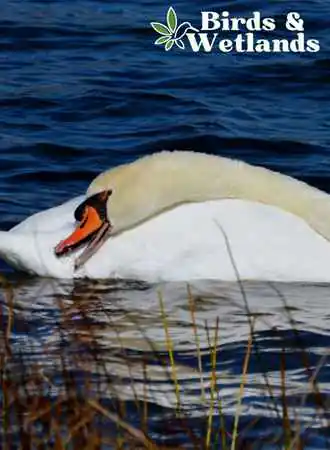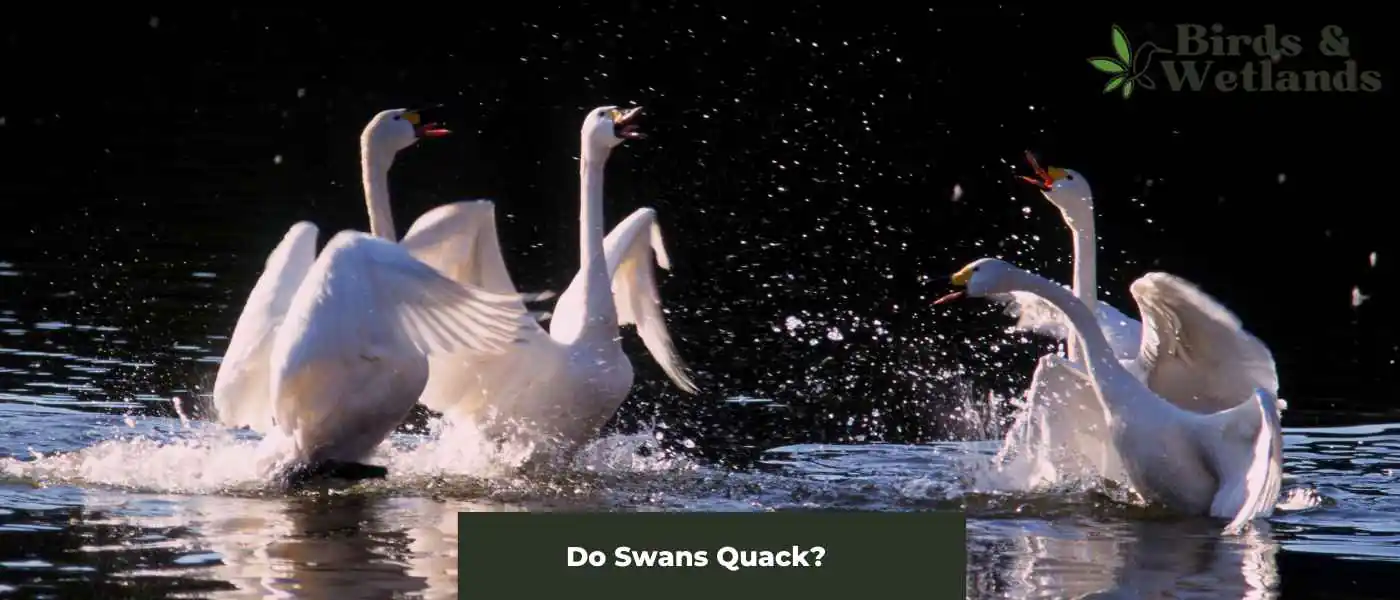Do swans actually quack like their close relative, the duck, or do they make other unique sounds?
Swans make various vocalizations, ranging from low-pitched honks to high-pitched, melodic trills. Depending on the species of swan, their vocalizations can also change in pitch, length, and intensity.
While swans don’t necessarily quack, they can emit soft, quack-like sounds that are more melodic than other waterfowl like ducks.
Key Takeaways on Swan Vocalizations
- Swans don’t quack but it’s important to note that they make all kinds of vocalizations.
- Swans have a wide range of sounds and calls that they use to communicate with one another, and these vocalizations play an important role in warning others of the presence of a predator.
- Swans use various communication methods to communicate with one another, including vocalizations, body language, and visual displays.
Do swans sing like humans?
No, swans do not sing like a human. They make a variety of vocalizations, such as honking and whistling, but these sounds and noise are not considered singing. Some species of swans, such as the trumpeter swan, are known for their loud and melodious calls, often described as bugling or trumpeting.
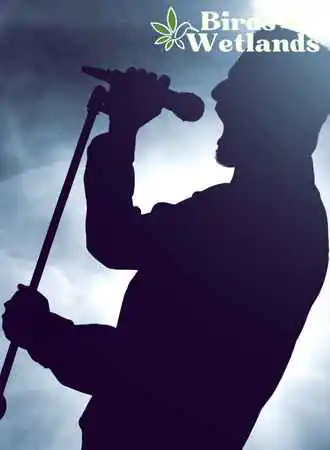
Do swans whistle?
Yes, swans can make whistling sounds as a form of vocalization. These sounds are often described as honking or trumpeting and are made by both male and female swans.
The whistling sounds of swans are usually louder and lower-pitched than the honking sounds. Some species of swans are known for their distinctive whistling calls, which can be heard over long distances.
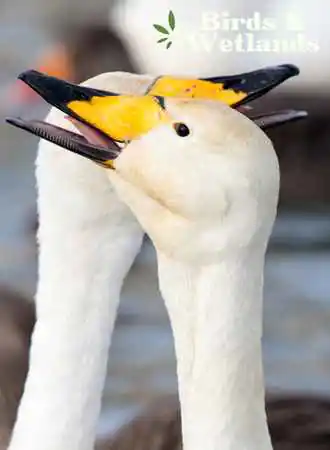
What kind of sounds or calls do swans make when they see intruders or raptors?
Swans, like other birds, have a variety of vocalizations that they use to communicate with one another. One of the most important uses of these vocalizations is to alert others to the presence of a predator.
In this context, swans typically make several different sounds and calls, each of which serves a specific purpose in warning others of danger.
One of the most common sounds that swans make when they spot a predator is a loud honking or trumpeting sound. This is a distinctive, loud call intended to be heard by other swans in the area, alerting them to the presence of a predator.
Generally, the males guard their nests on the ground and make a honking sound and is often accompanied by a head-nodding or head-shaking behavior, which further emphasizes the call and makes it more noticeable.
Another sound that swans make when they spot a predator is a high-pitched, piercing whistle. The female swan typically makes this call, often heard in conjunction with the male’s honking call.
The whistle is intended to be a more urgent and attention-grabbing sound. It is often used to signal to other swans that a predator is nearby and that they should take immediate action to flee or defend themselves.
In addition to these vocalizations, swans may make several other sounds and calls when they spot a predator. For example, they may make a low, rumbling growl or a series of soft clucking noises, both intended to signal to other swans that a predator is present and that they should take caution.
Swans may also make a series of sharp, piercing screams or squawks intended to be heard by the predator and may serve to deter it from attacking.
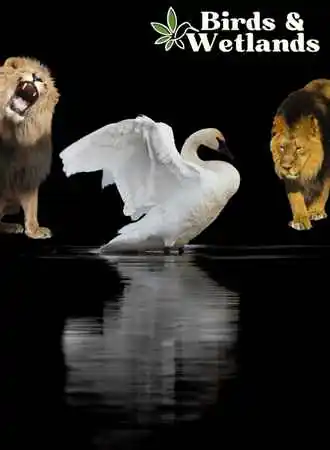
How do swans communicate with each other?
Swans, members of the family Anatidae, which also includes geese and ducks, are known for their graceful and elegant appearance, as well as their distinctive vocalizations. These birds use various communication methods to communicate with one another, including vocalizations, body language, and visual displays.
Vocalizations are perhaps the most well-known form of swan communication. Swans can produce various vocalizations, including honks, grunts, and whistles. These vocalizations are used for various purposes, including courtship, territorial defense, and group coordination, especially during migration in the winter or when they lose their flight feathers during molting.
Body language is another important form of communication used by swans within their flocks. Swans use various body postures and movements to convey different messages to one another.
Parents need to always on alert when they are feeding and foraging food on land or near rivers and lakes. Swans love to eat or feed on grass and other plants in the water.

Are mute swans mute?
The Mute Swan (Cygnus color) got its common name from its relatively silent nature compared to other swans. Unlike the trumpeter swan and the tundra Swan, which make loud honking sounds while in flight and while nesting, the mute swan is relatively quiet. This characteristic has been one of the key factors in why this bird has been the favored swan for domestication in Europe and other parts of the world.
